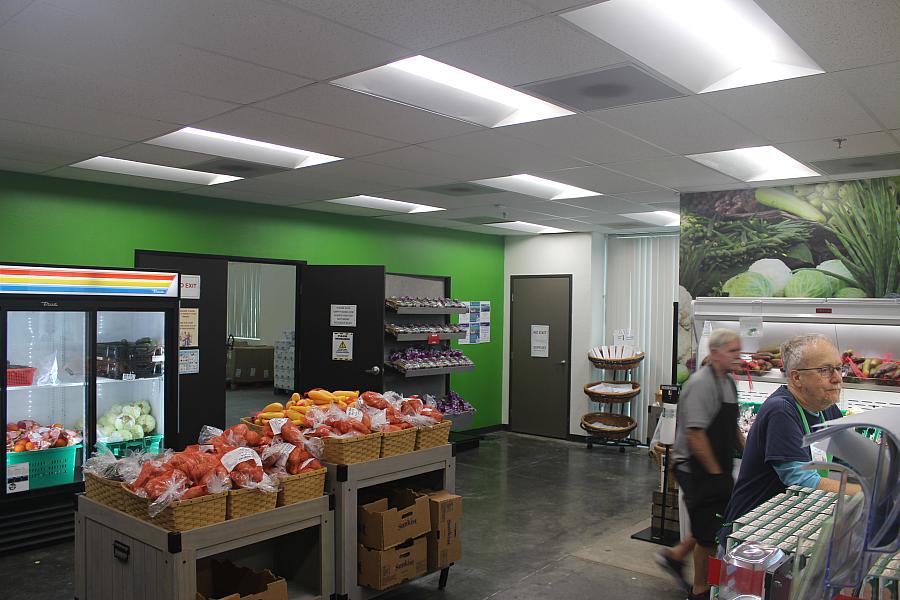The growing gap between federal food aid and those most impacted

Workers sort goods at the San Diego Food Bank.
(Photo via Hoda Emam)
Food insecurity remains a crisis for families across the country. Yet something unexpected is showing up in the data from federal food benefit programs.
I came to this story by way of another story on a related unmet family need. Earlier this year, as a 2023 California Health Equity Fellowship grantee, I reported on diaper inequity across the US. I wanted to understand the repercussions of lack of access to diapers and who was falling through the equity gap.
When interviewing parents who would visit diaper banks regularly to receive diapers and food items, many mentioned that they did not have access to federal food aid benefits such as WIC (Women Infant Children Services) or other supplemental nutrition programs. At the time, one mother said that it is easier going to food and diaper banks than “dealing with” WIC. Another said because she is undocumented, she was fearful of sharing her information with a government organization. One food bank representative said the amount and types of food allowed through the federal food aid program are generally not enough to feed a family, so parents still find themselves returning to food banks.
As fate would have it, after my report on diaper needs in the U.S. was published, a researcher on food insecurity pitched the idea to me of looking into why federal food aid programs have seen a nationwide decline in enrollment. While some states are jumping into action and doing the legwork needed to understand how to remedy food insecurity across the state, others are still in the dark. According to the U.S. Department of Agriculture, federal food aid is provided to about 6.7 million women, infants and children, but about half of those who are eligible for the program do not participate.
I knew this was my sign to focus on food insecurity and the communities impacted the most by lack of access to food.
Now, as a Center for Health Journalism 2023 Data Fellow, I hope to cover food insecurity in the state of Illinois for the Chicago Sun-Times. My goal is to focus on what the drop in food aid enrollment means, solutions to the decline, and alternative ways to connect and meet the needs of low-income families in Illinois.
As a journalist with over 15 years of experience, I began reporting on food insecurity and focusing on low-income communities at the start of the pandemic. As everyone was sheltering in place and stocking up, my local community was rallying together, offering free grocery drive-up services, while food trucks were roaming the streets handing out meals and restaurants were keeping busy by providing discounted packaged dishes. People from all walks of life were in need of financial help and embracing every service available.
Since then, I have decided to center my research and reporting around the health and wellbeing of communities. The COVID-19 pandemic put a spotlight on food insecurity, including food deserts and how our geography plays a large role in who has access to quality food items. As we move forward from the pandemic, the side effects continue to surface. Through my past reporting I have learned that families who had their main income producer impacted by COVID are still trying to overcome the effects. Many who fall through the cracks of poverty and just barely surviving now rely on foodbanks to help them make ends meet.
Food insecurity is a public health matter that affects poverty rates, race, geography, immigration, and health outcomes. By analyzing large amounts of public data from state and federal programs, community surveys, health care systems and social services, I will be looking at the potential reasons why enrollment for federal food aid support has decreased nationwide.
I plan to compare trends in food access in Illinois with similar size states to see if there are comparable programs that are working.
Through data analysis I hope the information I uncover will put pressure on states to allocate funds and attention towards grassroots food access advocacy. I plan to incorporate data visualization charts and soundbites from those who have been impacted by the decline to help readers and listeners fully grasp the impact of what is happening in communities across Illinois.
Through the Data Fellowship I look forward to continuing my work covering vital stories that focus on underserved populations.

